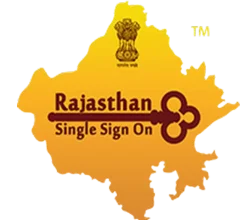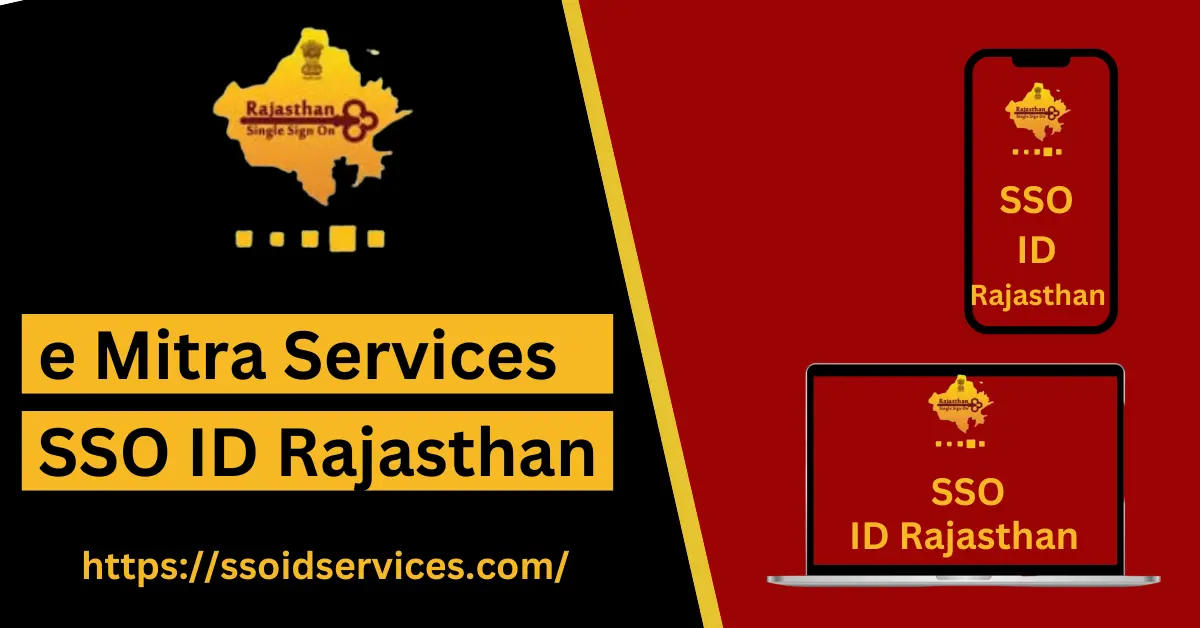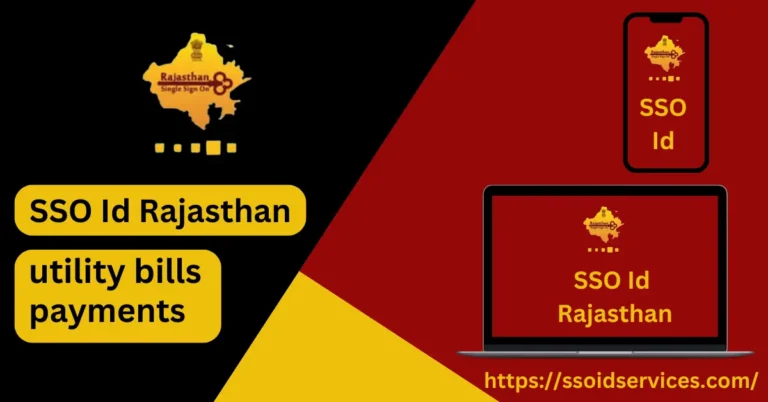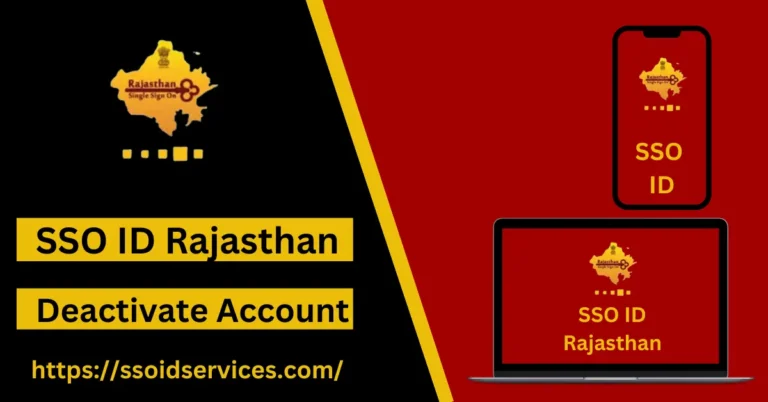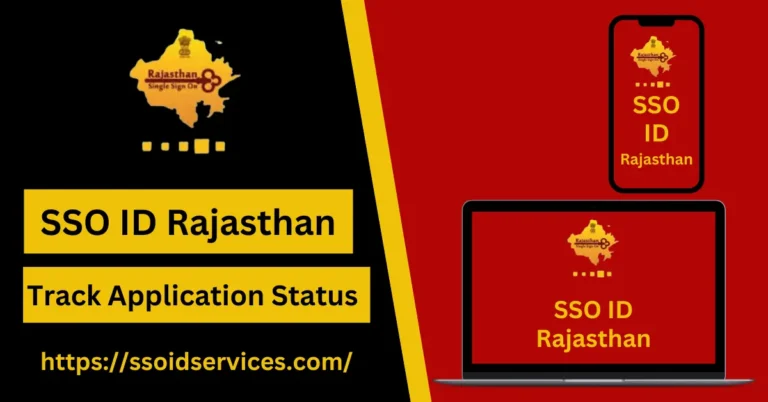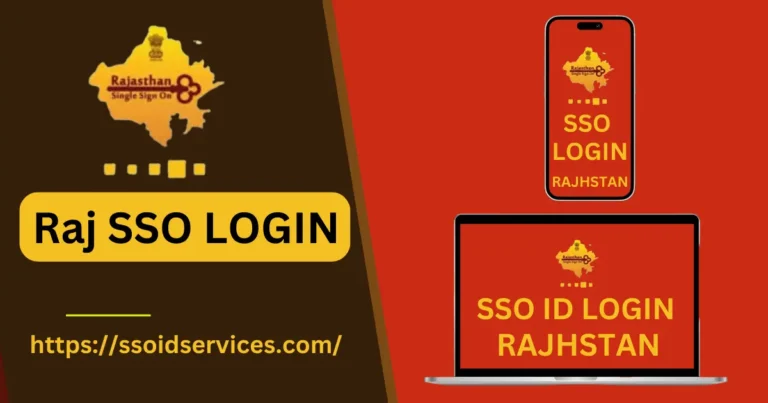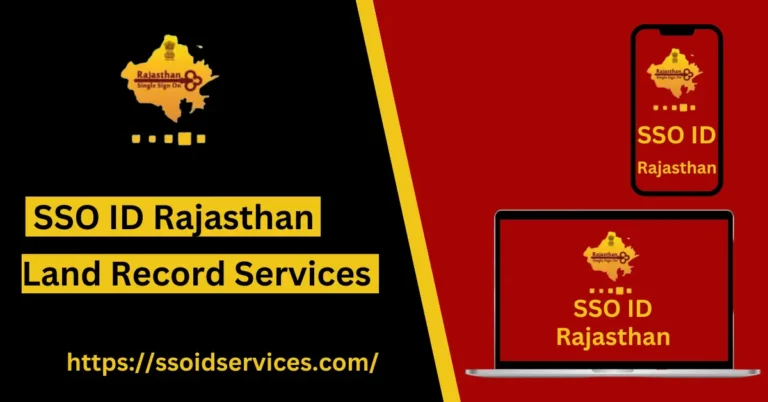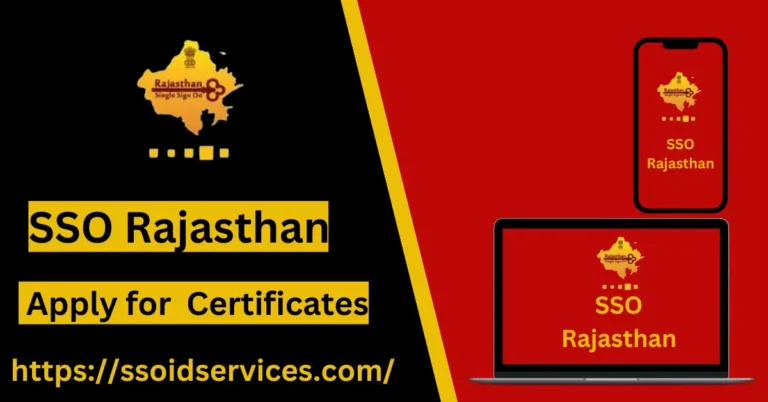SSO ID Rajasthan enables you to Access e Mitra Services
SSO ID Rajasthan : Accessing e Mitra Services using SSO ID Rajasthan constitutes a key advancement in the digital governance system of Rajasthan. It integrates the comprehensive eMitra with a unified SSO system. This innovative technology has transformed the interaction between government and citizens, providing greater convenience. The impact of the integration will be explored, including its advantages, challenges and effects on administrative efficiency and digital literacy. Our analysis will cover how this integration is improving government service delivery in Rajasthan, and enhancing data security.
Also Read: Use the SSO ID for government Job Applications
In this article, we will examine the technical and policy aspects of the integrated system, as well as its future potential. The article will explore how this system can bridge the urban-rural gap, increase transparency and enable data-driven decision-making. This comprehensive review of this innovative e-governance project will provide an overview by examining how it balances user-friendliness with security, efficiency, and inclusivity.
Also Read: How to link Aadhar and SSO ID Rajasthan: A comprehensive guide to digital integration
Understanding eMitra & SSO-ID Rajasthan
Be sure to read the following before you dive into details. e-Mitra was launched by the Rajasthani government as an ambitious e-governance program. It aims to offer a wide range of services for citizens via a single-window interface. SSO ID Rajasthan allows access to multiple government services through a single digital ID.
Integrating these systems together has led to a more powerful service platform, which significantly improves the efficiency and accessibility of government services. This integration does not come without its challenges.
Accessing e Mitra Services using SSO ID Rajasthan
Access to Multiple Services in One Place
SSO ID Rajasthan allows you to easily access e-Mitra Services. Citizens do not need to keep track of multiple passwords and usernames. With a simple login, users can gain access to a number of eMitra-based services, including utility bill payment and certificate applications.
The User Experience is Enhanced
SSO ID’s integration with eMitra has a significant impact on the user interface. Unifying the interface simplifies navigation and eliminates confusion. Improved usability makes services available to citizens with less tech knowledge.
Improved Security and Data Management
SSO ID centralizes authentication and enhances security. By reducing the vulnerability of passwords, it allows for improved security. It also simplifies data storage for both the user and government as documents and personal information can be safely stored together in one location.
Cost and time efficiency
The system saves both government employees and citizens time. Users are able to quickly access several services, without needing to repeatedly enter details. Meanwhile, government departments have more time for processing requests due to the centralized data. This efficiency can translate into cost savings through reduced administrative overhead and paper work.
Instant updates and notifications
Integrating the services allows users to receive real-time notifications about their status and other information. Users will receive immediate alerts regarding the status of applications, the due date for payment, and about new service offerings. This communication is timely, which increases transparency and allows citizens to stay up-to date on their interactions.
Challenges and Considerations
Even though the integration of e-Mitra Services with SSO ID Rajasthan presents many advantages, it also poses several challenges.
Digital Literacy & Accessibility
A major issue is that citizens have varying degrees of digital literacy. It is true that the digital platform simplifies things for more tech-savvy people, but those with less knowledge of it might find themselves in a difficult situation. This digital gap could marginalize certain sections of the population. This is especially true in rural areas, where access to internet and computer literacy may be low.
For this reason, the Government has set up eMitra Kiosks and Training Programs. But ensuring that digital literacy spreads widely remains a constant challenge. For inclusivity, it is important that the government continues to invest in digital initiatives for education.
Reliability and Technical Infrastructure
Success of integrated systems heavily depends on a robust technical infrastructure. Problems like server outages, low internet speeds or system bugs can negatively impact the delivery of services. In peak periods, the load on the system can increase, causing slowdowns, or even temporary unavailability.
In order to meet this challenge we must invest in IT infrastructure continuously, perform regular maintenance on systems, and implement scalable, high-traffic solutions. For service continuity, government agencies must develop disaster recovery plans and effective backups systems.
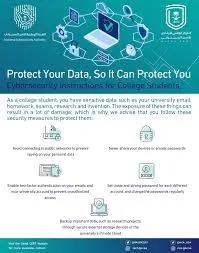
Protection of Personal Information and Cyber Security
SSO ID enables centralized management of your data, which can enhance security. But it may also cause privacy issues. When a breach occurs, it can have a greater impact because a single SSO ID account holds a great deal of information. Many citizens worry about how their data is protected and whether it can be misused.
To respond to these concerns, government officials must adopt the latest security technologies, including multi-factor verification, encryption, and regularly scheduled security audits. For the public to maintain trust in government, there must be transparency regarding data handling and communication of security protocols.
Convenience and security: Balancing the two
SSO systems are always a compromise between convenience, security, and ease of use. One login may make access easier, but if it is compromised, the attacker might gain access across multiple services. Finding the balance between security and ease of use is always a challenge.
Security can be improved by implementing additional features, such as risk-based authentication and biometrics. But these security measures need to be used carefully in order not to compromise the user-friendliness of the system.
Updates of the System and User Adaptation
In order to enhance functionality and increase security, updates of the eMitra platform are required. However, users may have difficulty adjusting to frequent updates, particularly those less familiar with technology. It is vital to offer users adequate support, guidance and assistance during the transitions of updates.
Users should be able to adapt to any system change by providing clear documentation, which is accessible to all.
Effect on service delivery and governance
The integration of e-Mitra and SSO ID Rajasthan services has significantly impacted service delivery, governance, and the overall state.
Use of Government Services to Improve Efficiency
The system’s centralization of user data, and its streamlining of access to government services have significantly increased the efficiency. The integrated system allows departments to reduce the amount of paperwork they have, process requests faster and use resources more efficiently. This efficiency is not only beneficial to citizens, but it also helps the government save costs.
Enhanced Accountability, Transparency
Its digitality increases transparency and accountability in the delivery of public services. Citizens can monitor the progress of their transactions and application in real-time. This reduces corruption opportunities and increases accountability. This transparency builds trust between the citizen and government.
Data-Driven decision making
A centralized data system facilitates better collection and analyses of data. This allows the government to gain valuable insights about service usage, find areas of improvement, and take data-driven service decisions. This data-centric method can help to deliver more targeted and efficient governance.
Urban-Rural Divide and the Need to Bridge it
Although there will always be challenges, an integrated system could bridge the divide between rural and urban areas when it comes accessing government service. A digital platform that is accessible from anywhere reduces citizens’ need to visit government offices. This will benefit those in remote regions.
Digital Literacy, Inclusion and Promotion
Indirectly, the implementation of an integrated system promoted digital literacy. More services becoming available online encourages citizens to develop digital literacy. This move towards adoption of digital technology can have profound effects on a state’s economic and social growth.
Future Prospects and Enhancements
The technology is constantly evolving, so there are a few potential improvements that would further enhance the integration of eMitra with SSO ID Rajasthan.
Artificial Intelligence & Chatbots
AI-powered chatbots provide immediate support for users by guiding them and answering common questions. This would reduce the burden on support staff by a significant amount and allow citizens to receive 24/7 assistance.
Enhanced security with Blockchain
Integrating blockchain could enhance transaction security and increase transparency. Blockchain technology can provide a record that is immutable of all transactions. It reduces the possibility of fraud, and improves audit trails.
Mobile-First Approach
The increasing popularity of smartphones makes it possible to further enhance accessibility by developing a mobile app that can access eMitra Services via SSO ID, particularly in regions with low computer availability.
Integration with Emerging Technologies
Future iterations of the software could incorporate emerging technologies like Internet of Things services for smart cities, or augmented realities (AR) interactive navigation to enhance both user experience as well as service capabilities.
Personalized Service Recommendations
By implementing machine-learning algorithms, the platform can provide customized service recommendations that are based off of a user’s profile and interactions in the past.
Conclusion
The integration of e-Mitra and SSO ID Rajasthan services represents a significant move towards improved digital governance. The integration of e-Mitra services with SSO ID Rajasthan represents a significant step towards digital governance and improved public service delivery.
The government needs to strike a balance in order to maximize efficiency while ensuring that all citizens are included. As the system continues to evolve, it is important for the government to maintain a balance between leveraging technology and ensuring inclusivity.
Final success depends on the commitment of digital inclusion, continuous improvement and responsive governance. Rajasthan has been integrating eMitra and SSO ID as it moves towards its digitalization. This integration is a great model for any state or country looking to increase their eGovernance capability.
FAQs
How do I register for an SSO ID to use e-Mitra services?
The official SSO Rajasthan Portal is the place to go for registration. Then click the “Register button” and follow the steps to create your SSO ID. In order to create your account, enter basic information as well as a user name and password. Your SSO ID will allow you to log in and access eMitra.
What are the main benefits of using e-Mitra services via SSO ID?
There are many benefits, including a simplified login for multiple services and improved user experiences, increased security and better data management. It also saves time and money, while providing real-time information and notifications.
What should I do if I face technical issues while using e-Mitra services with my SSO ID?
Contact the e-Mitra customer service line for technical support or go to an e-Mitra e-Mitra pavilion. SSO Rajasthan’s portal also has a section of support with troubleshooting and FAQs to assist in resolving common issues.
How does the government ensure the security of my personal data when using SSO ID and e-Mitra services?
Protecting your data is a priority for the government. This includes encryption, authentication with multiple factors, and audits of security. For the public to remain trusting, there must be transparency regarding data handling protocols and clear communication on security protocols.
